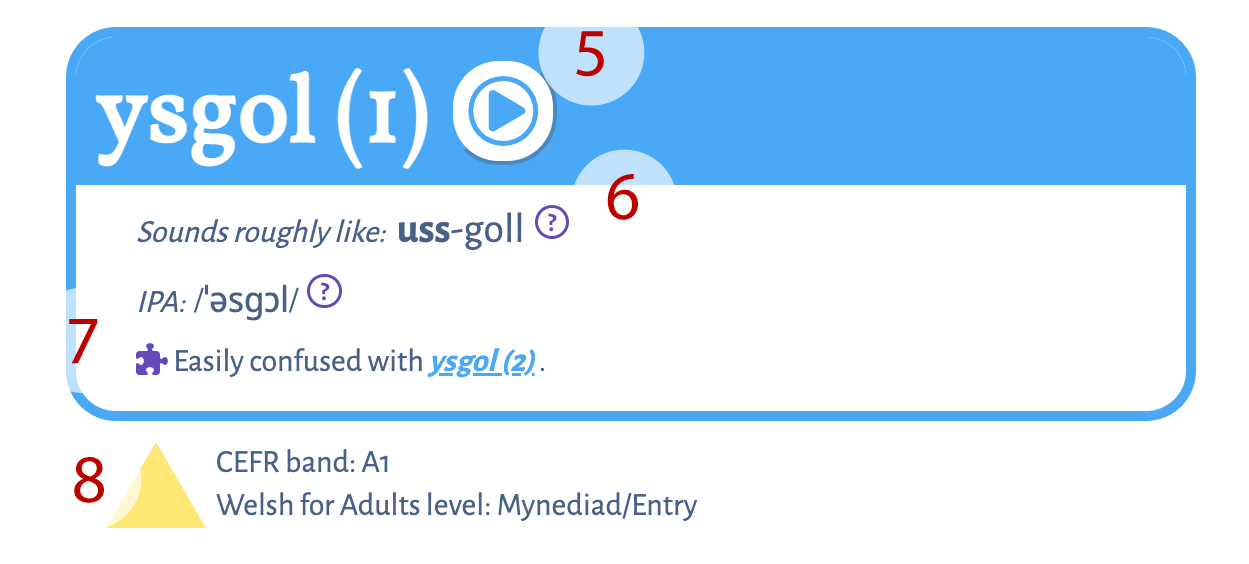This page gives a brief visual guide to Geirfan, using labelled images
to explain how information is organized in the dictionary entries, and what various symbols mean.

- Clicking or tapping this icon will return
you to the home page.
- Type a Welsh word into this box to search
for it in the dictionary.
- Click or tap to start your search.
- Icons which will take you to the
homepage, the about page, the guide, and the index.
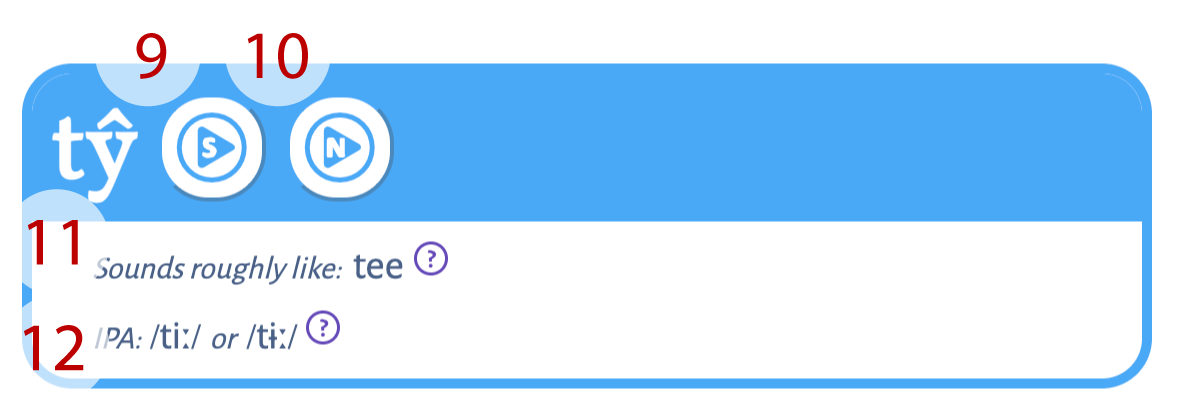
- Click/tap to hear a southern pronunciation of the headword.
- Click/tap to hear a
northern pronunciation of the headword.
- These are approximate guides to pronunciation, using English spelling conventions. The sounds of
Welsh cannot all be represented using English spelling, however, so these guides are very
rough and should not be used as a substitute for listening to the audio and using the IPA
transcriptions below.
-
The tooltip for each IPA transcription contains a link to Wikipedia's page about the IPA.

- Every dictionary entry
contains at least one part-of-speech section. These are represented in separate containers.
- Definitions are numbered (14a)
when a part-of-speech section contains more than one main sense. They are unnumbered (14b)
when there is only one main sense.
- These labels store
information such as how the headword is used with other words (15a) or what kind of
linguistic style
it belongs to (15b).
- A note following the defintion, giving
information about aspects of this sense such as contexts in which it can occur, or
topics with which it is often associated.
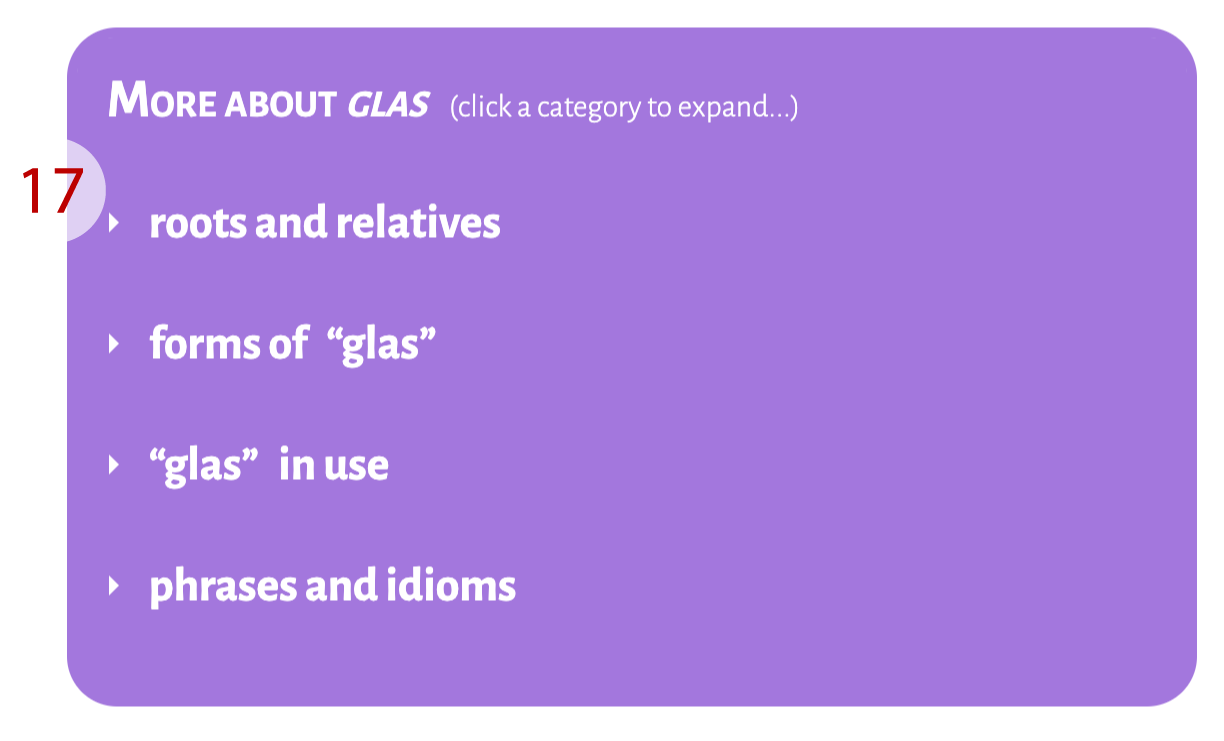
- This section appears at the end
of most entries, and contains further information about the headword. The arrows at the left
of each menu item will expand the relevant section if you click/tap them.
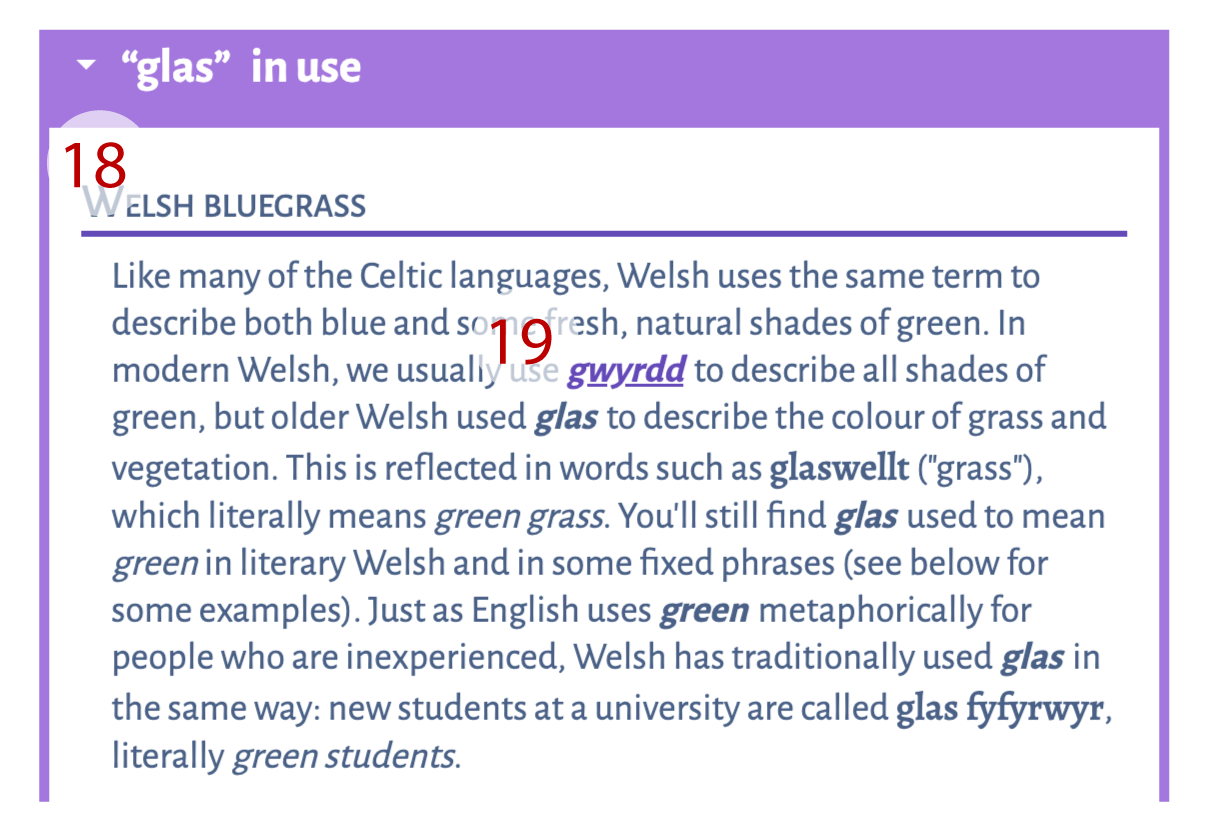
- "In use" boxes describe some
interesting
feature of the headword as it is used in modern Welsh.
- If a keyword in the discussion has a
dictionary entry, it will be hyperlinked to that entry..

- Compound terms that feature the headword.
- A list of Welsh idioms and
phrases which feature the headword.
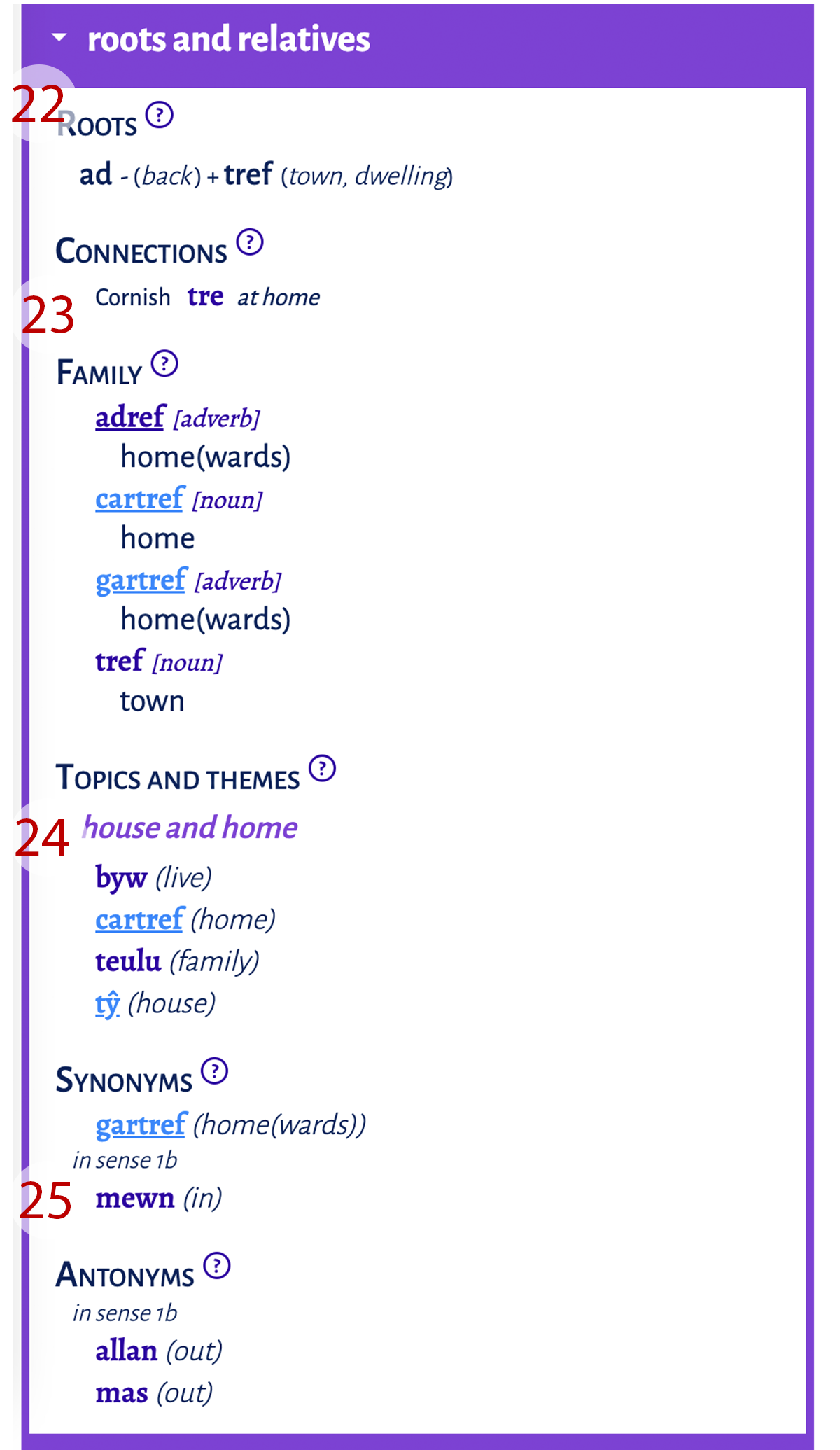
- Information about the headword's etymology.
- Words which share a
root with the headword. "Family" lists Welsh words, while "Connections" lists words in a
variety of languages.
- Welsh words that share a semantic
field, or area of meaning, with the headword.
- Welsh words with similar or
opposite meaning to the headword.
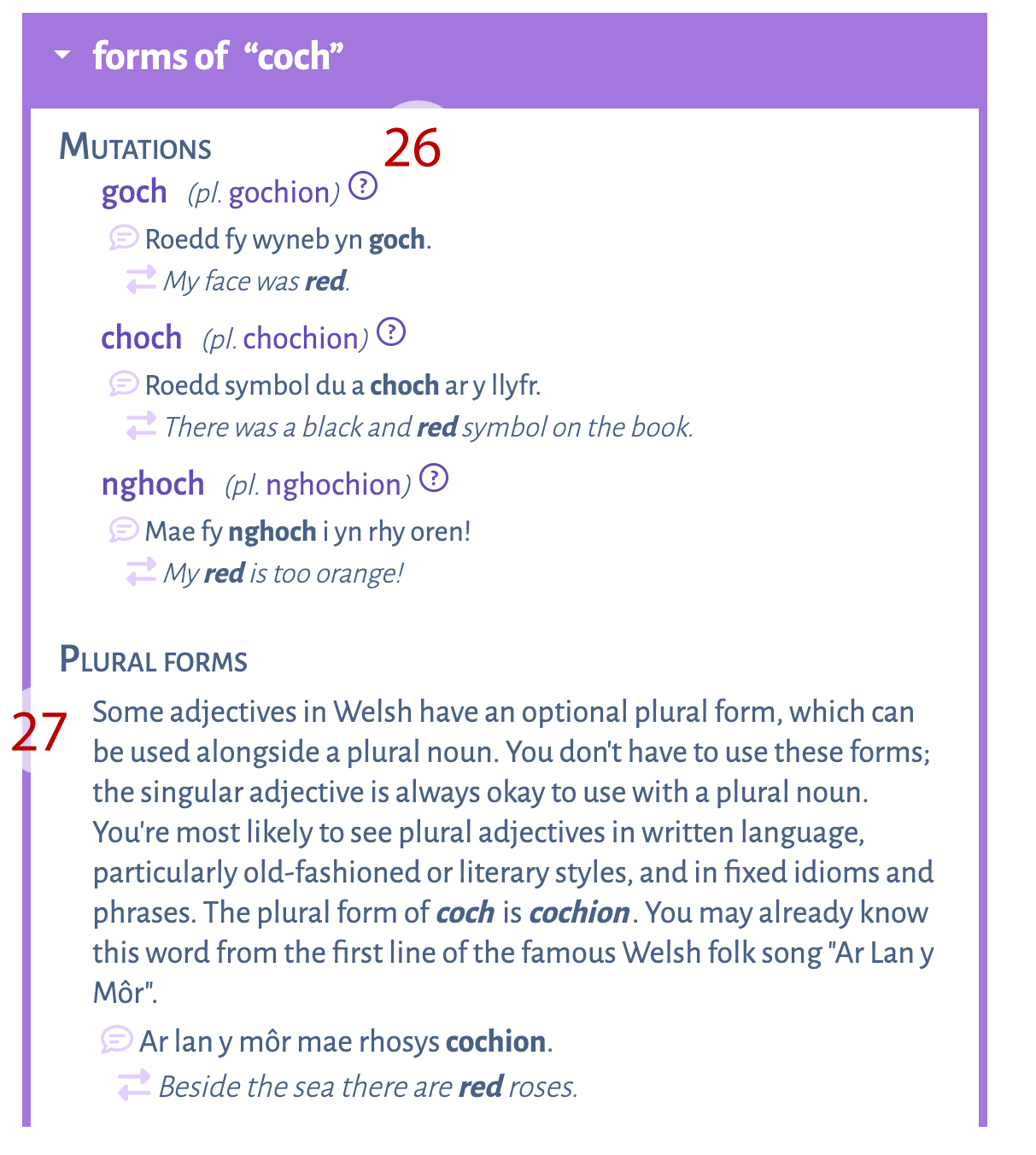
- A section listing
various forms of the headword, such as mutations, plurals, genders, and so on.
- Sometimes, it is
useful to add a note explaining some difficult or unexpected aspect of the headword
forms.
